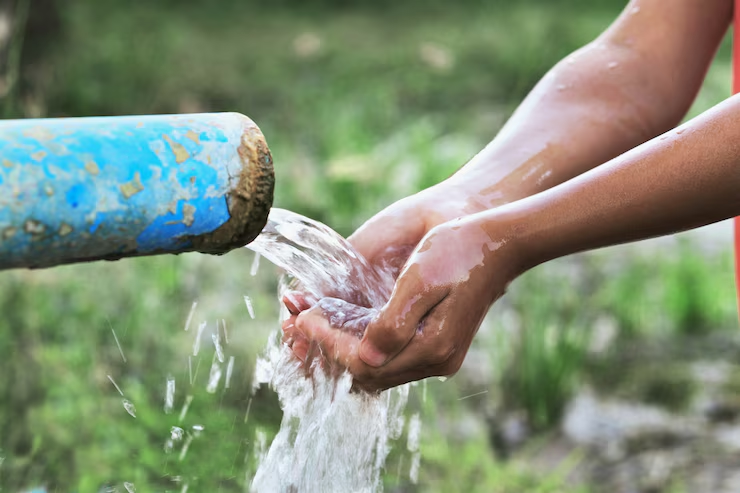Access to clean drinking water and proper sanitation is essential for the health and well-being of any community. Unfortunately, many areas still face significant challenges in achieving clean water access and adequate sanitation. Improving these conditions can lead to a healthier population, reduced disease transmission, and enhanced quality of life. Here are ten effective ways to improve clean water access and sanitation in your community.
Raise Awareness
One of the first steps toward improving clean water access is raising awareness about the importance of clean drinking water and sanitation. Organizing community workshops, seminars, and awareness campaigns can educate residents about the health risks associated with contaminated water and poor sanitation. Distributing informational materials can help residents understand the significance of clean water and sanitation, motivating them to take action.
Community Clean-Up Initiatives
Organizing community clean-up days can significantly improve the sanitation of your local environment. These initiatives involve gathering volunteers to clean up public spaces, such as parks, rivers, and streets. A cleaner environment reduces the risk of water contamination and encourages responsible waste disposal practices. By engaging the community in these efforts, residents become more invested in maintaining a clean and healthy environment.
Support Local Water Purification Projects
Investing in water purification technologies can drastically improve clean water access. Communities can collaborate with local governments or NGOs to establish water purification systems. These systems can include filtration, chlorination, and solar disinfection methods, making previously contaminated water sources safe to drink. Supporting these initiatives not only provides immediate benefits but also fosters a culture of sustainability and environmental responsibility.
Install Sanitation Facilities
Access to proper sanitation facilities is crucial for maintaining public health. Local governments can prioritize the installation of clean toilets in public areas, schools, and low-income neighborhoods. By ensuring that sanitation facilities are available and accessible, communities can reduce the prevalence of waterborne diseases and improve overall health outcomes.
Promote Rainwater Harvesting
Rainwater harvesting is an effective and sustainable method for improving clean water access, especially in areas prone to drought or limited water resources. Communities can implement systems to collect and store rainwater for domestic use. Educating residents about constructing simple rainwater harvesting systems can empower them to utilize this natural resource effectively.
Establish Regular Water Quality Testing
Regular testing of water sources ensures that residents have access to safe drinking water. Local authorities can implement water quality monitoring programs that include testing for contaminants, bacteria, and other harmful substances. By publicly sharing the results, communities can make informed decisions about their water supply and address any issues promptly.
Invest in Infrastructure
Improving water infrastructure is essential for providing clean water access. This includes repairing and maintaining pipes, building treatment plants, and ensuring proper drainage systems. By investing in infrastructure development, local governments can enhance the efficiency of water distribution systems and minimize leaks and contamination risks.
Collaborate with NGOs and Government Programs
Many non-governmental organizations (NGOs) and government initiatives focus on improving clean water access and sanitation. Communities can collaborate with these organizations to leverage resources, expertise, and funding. By working together, communities can develop comprehensive strategies to address water and sanitation challenges effectively.
Educate on Hygiene Practices
Promoting hygiene education is crucial for maintaining sanitation and preventing waterborne diseases. Schools, community centers, and health clinics can conduct programs on proper hygiene practices, including handwashing, safe food preparation, and waste disposal. By fostering a culture of hygiene, communities can improve health outcomes and reduce the incidence of diseases linked to poor sanitation.
Encourage Community Involvement
Finally, fostering community involvement is key to sustaining improvements in clean water access and sanitation. Encouraging residents to take part in decision-making processes regarding local water and sanitation issues can lead to more effective solutions. Establishing community groups or committees focused on water and sanitation allows residents to voice their concerns, share ideas, and collaborate on projects.
Conclusion
Improving clean water access and sanitation in your community requires a multifaceted approach that involves education, infrastructure development, community engagement, and collaboration with external organizations. By implementing these ten strategies, communities can work towards ensuring that every resident has access to clean drinking water and proper sanitation facilities. The benefits of such efforts extend beyond health; they foster economic development, enhance quality of life, and create resilient communities. Together, we can make significant strides toward achieving clean water and sanitation for all.
Read More: Regular Water Tank Cleaning: Essential for Health



